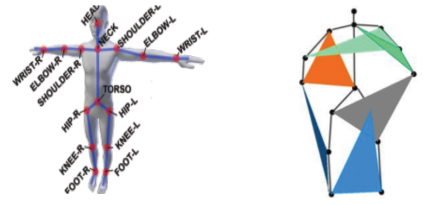
Former members
Prof. Alícia Casals | Group leader
Now: UPC / Associated researcher, IBEC
About
The growing potential of robotics in the medical field leads to face challenging problems, but at the same time creates great expectations in society, as new devices and equipment are envisioned as killing solutions with respect to current technology. The IBEC’s Robotics group research aims to contribute to the slow but continuous advances in the medical field, in the areas of assistance to disabled, in rehabilitation and assistance in surgery. A common factor in these three areas is the need of adaptation to the user’s needs, what implies perceiving not only the user’s will and status, but also the environment conditions and the evolution of the ongoing activity.

Our current research within the HYPER project (Hybrid Neuroprosthetic and Neurorobotic Devices for Functional Compensation and Rehabilitation of Motor Disorders) is to search for new adaptive control algorithms focusing on specific actions, as the transition from sit to stand or keeping the walking pattern under internal or external perturbations. This control has to deal with disturbances caused by muscle synergies, taking into account unpredictable effects of artificial stimulation in muscles during rehabilitation therapies or other effects as fatigue or the own user’s attention to the therapy. In this field, the work carried out has been focused on developing a control system with variable hierarchy and a status evaluator that allows adapting the control variables, mainly the variable stiffness at each joint, to reach the desired response and stability.
Being human-robot interaction a key factor in medical robotics, our research in assistive robotics is devoted to interpret human activity and the operation context so as to be able to program robots to cooperate proactively in assisting disabled in their daily tasks. This implies the extraction of relevant image features to recognize human posture and actions and relate them to the context environment and the evolution of tasks and activities, using recognition and learning techniques. The challenge is finding adequate algorithms that are reliable enough and can reduce the amount of data to process so as to be able to operate in real time. Figure 1 shows the original data, the human joints, and the reduction of triangles, trisarea feature, that define each posture in a sequence of poses corresponding to the human movement. For the adequate robot control this information has to be compatible with the environment status, thus perception and context interpretation is necessary. Further work has been done on the integration of multiple robot arms to deal with tasks that need cooperative actuation.

The research in surgical robots has progressed going deeper in the development of robot aids, as the analysis of tissues deformation aiming to solve problems as physiological movement detection for robot motion compensation or for estimation of the force applied on the tissues due to the lack of sensors to be integrated on the surgical tools. Fig. 2 shows a sequence of images of the heart and the changes produced on the heart surface by the forces applied. The image processing operates from the minimization of an energy functional using the l_1−regularized optimization class in which cubic b-splines are used to represent the changes produced on the heart surface.
In technology transfer, much progress has been done in the spin-off, Rob Surgical Systems S.L, having already started the experimentation with models in an experimental operating room and advancing in the regulatory process. We have also advanced in the Surgitrainer project, a training simulator for minimally invasive surgery and a new specific robotic trainer has been designed, built and evaluated in Hospital de Sant Pau and in the Leuven premises of our partner, as part of the European Society for Gynaecological Endoscopy. We are now in process of creating a company. The aim is to progressively advance in new robot surgical techniques that assist surgeons from the training phase to their assistance in clinical interventions.
Projects
EU-funded projects
| HYPER Hybrid NeuroProsthetic and NeuroRobotic Devices for Functional Compensation and Rehabilitation of Motor Disorders | CONSOLIDER | Alícia Casals |
National projects
| Interacción persona robot en entornos semiestructurados bajo criterios de permitividad | I+D-Investigación fundamental no orientada | Alícia Casals |
| BITRACK: Validación clínica robot quirúrgico (2015-2018) | MINECO | Alícia Casals |
| Hystrainer: Surgical trainer for hysteroscopy surgery |
Programa Indústria del Coneixement: LLAVOR 2014 |
Alícia Casals |
Privately funded projects
Desenvolupament d’un sistema robòtic de baix cost d’ajut a la rehabilitació de la marxa per a nens amb trastorns greus |
RECERCAIXA | Alícia Casals |
| InHANDS Interactive robotics for Human Assistance iN Domestic Scenarios | RECERCAIXA | Joan Aranda |
| TAM – Desenvolupament d’un sistema intel·ligent de selecció i manipulació d’objectes en un entorn estèril (2014-2016) | Technologies for Advanced Manufacturing and Robotics, S.L. | Alícia Casals |
| Desenvolupar un sistema d’assistència robòtica per medicina i cirurgia fetal (2016-2019) | CELLEX | Alícia Casals |

